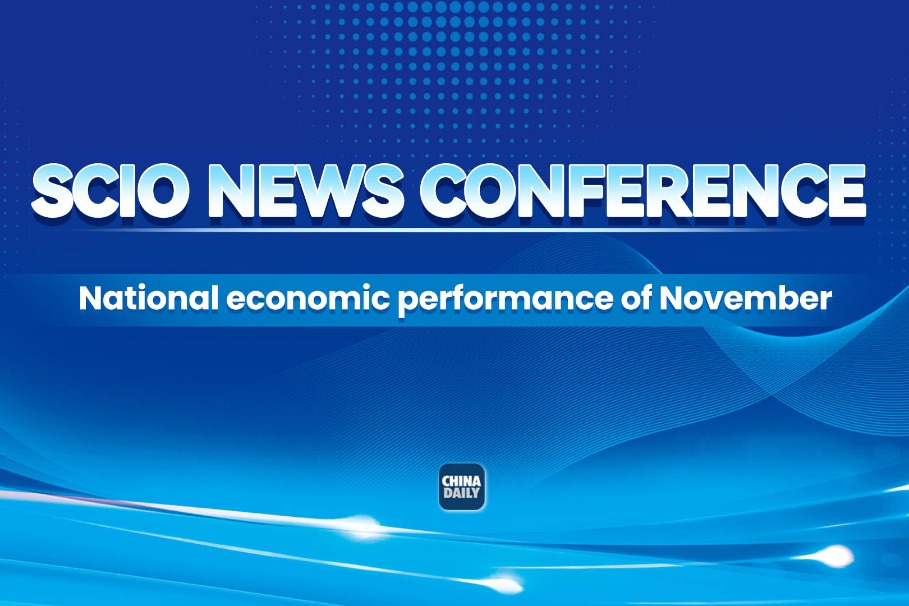Amid economic headwinds, Fed holds rates steady
By HENG WEILI in New York | China Daily Global | Updated: 2023-06-15 08:59

The US Federal Reserve — after 10 consecutive interest rate hikes — kept rates as is Wednesday while it navigates inflation, banking upheaval and a persistently low unemployment rate.
Still, the central bank signaled that borrowing costs likely will rise by another half-percentage point by the end of this year.
The new projections show policymakers see the benchmark overnight interest rate rising from the current 5-5.25 percent range to a 5.5-5.75 percent range by year-end.
The rate-setting Federal Open Market Committee (FOMC) said in a unanimous policy statement issued at the end of the two-day meeting that "holding the target (interest rate) range steady at this meeting allows the committee to assess additional information and its implications for monetary policy".
"We understand the hardship that high inflation is causing, and we remain strongly committed to bring inflation back down to our 2 percent goal," Fed Chair Jerome Powell said at a news conference after the statement. "The process of getting inflation down is going to be a gradual one — it's going to take some time."
Sam Stovall, chief investment strategist at SFRA Research, said, "It does seem as if the FOMC members have become even more hawkish since the last meeting, and I think that has taken investors by surprise."
One economist, however, doesn't believe the Fed will raise rates any more this year.
"With inflation set to moderate noticeably, we are skeptical that the Fed will resume hiking interest rates," Ryan Sweet, chief US economist of Oxford Economics, wrote in a note. "Our baseline forecast is for the Fed to remain on hold through the remainder of this year before gradually easing in early 2024."
Powell and other top policymakers also have indicated that they want to assess how much a pullback in bank lending might be weakening the economy. Banks have been slowing their lending — and demand for loans has fallen — as interest rates have risen. Some analysts have expressed concern that the collapse of three large banks in the spring could cause lenders to sharply tighten their loan qualifications.
"The bank failures in March are leading the Fed to hike less aggressively than they would have otherwise," said Dean Maki, chief economist at hedge fund Point72 Asset Management, reported The Wall Street Journal. "It is defensible to slow down the pace of hiking at this point."
On social media, some see the Fed in a predicament.
"The Fed fears raising rates due to the banks and the lag effects. They are also scared to lower rates and fuel more speculative activity," wrote Michael Lebowitz, CFA, on Twitter. "They are in a trap of their own making."
Economist Dr Jack Rasmus tweeted that "what we're witnessing is the growing contradictions inherent in 21st century capitalist monetary policy: central banks can't raise rates high enough to manage inflation w/o exacerbating financial markets' instability. Monetary policy has become 'inefficient' & 'ineffective.'"
"Some Fed officials don't want to keep raising rates after three bank failures since March, which could lead to a credit crunch as banks face higher funding costs," tweeted Euan Rellie of BDA Partners, a global investment banking adviser for Asia.
Some are worried that inflation, hiring and consumer spending are all still elevated. The higher rate outlook coincides with an improved view of the economy and, consequently, slower progress in getting inflation down to the Fed's 2 percent target.
Fed officials more than doubled their outlook for 2023 economic growth to 1 percent, from 0.4 percent in the March projections, and now see the unemployment rate rising only to 4.1 percent by the end of the year compared with 4.5 percent in the March outlook. The unemployment rate as of May was 3.7 percent.
The stronger-than-expected economy means inflation will fall more slowly, with the core Personal Consumption Expenditures (PCE) price index seen dropping from the current 4.7 percent to 3.9 percent by the end of 2023, compared to a 3.6 percent year-end rate seen in March projections. The PCE is the Fed's preferred inflation gauge.
The other major inflation measure, the consumer price index (CPI) compiled by the Labor Department, rose 4 percent in May, the smallest year-on-year increase since March 2021. The CPI was up 4.9 percent in April.
The annual CPI peaked at 9.1 percent in June 2022, which was the biggest increase since November 1981.
The Fed's policy interest rate, which influences household and business borrowing costs throughout the economy, rose five percentage points from near zero from the onset of the tightening cycle in March 2022, reaching the highest level since just before the start of the 2007-09 recession.
Agencies contributed to this story.























